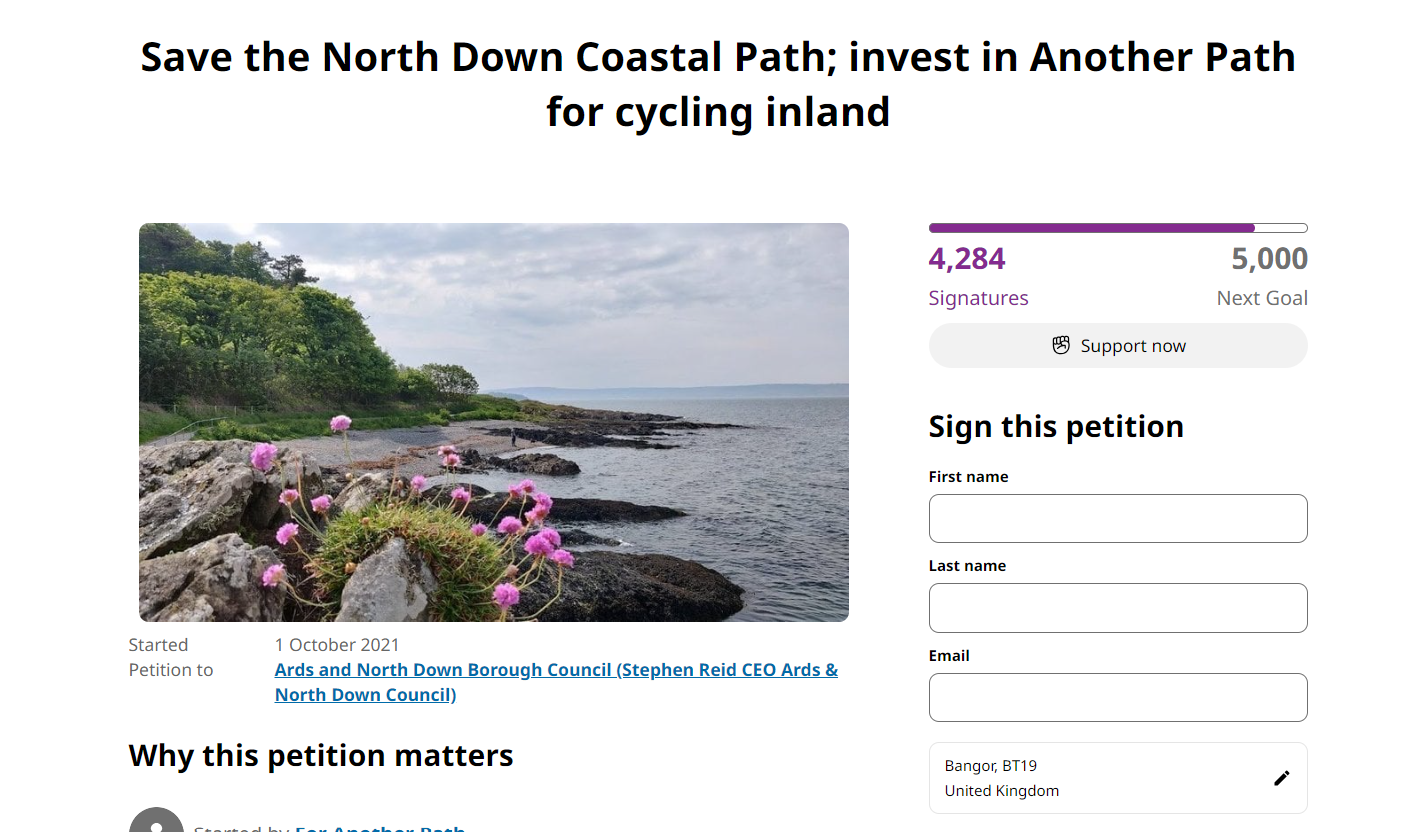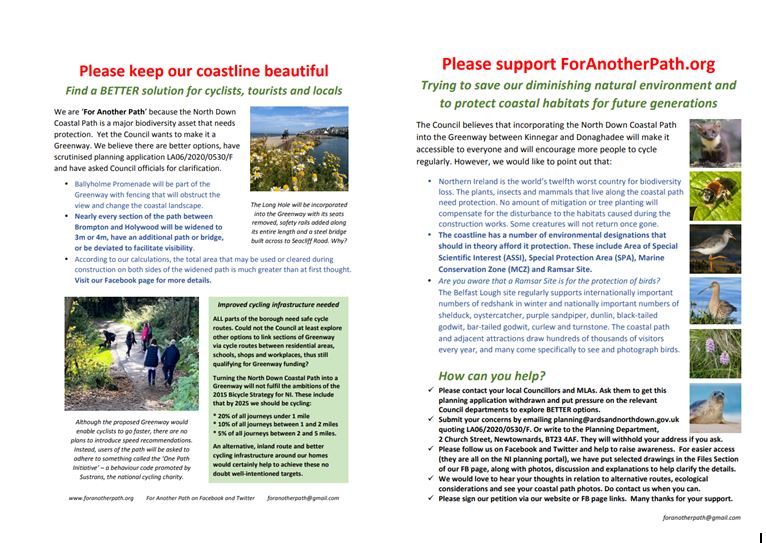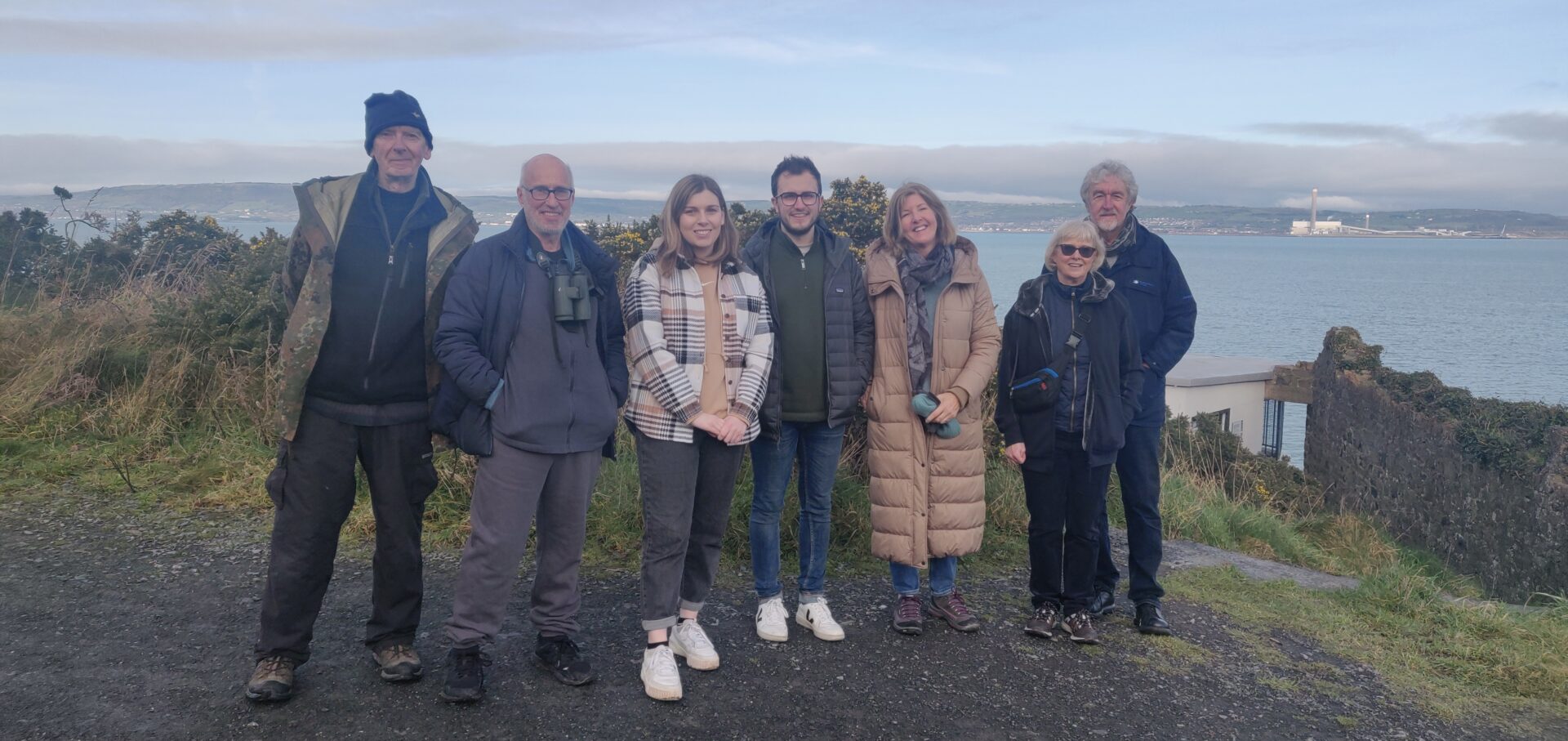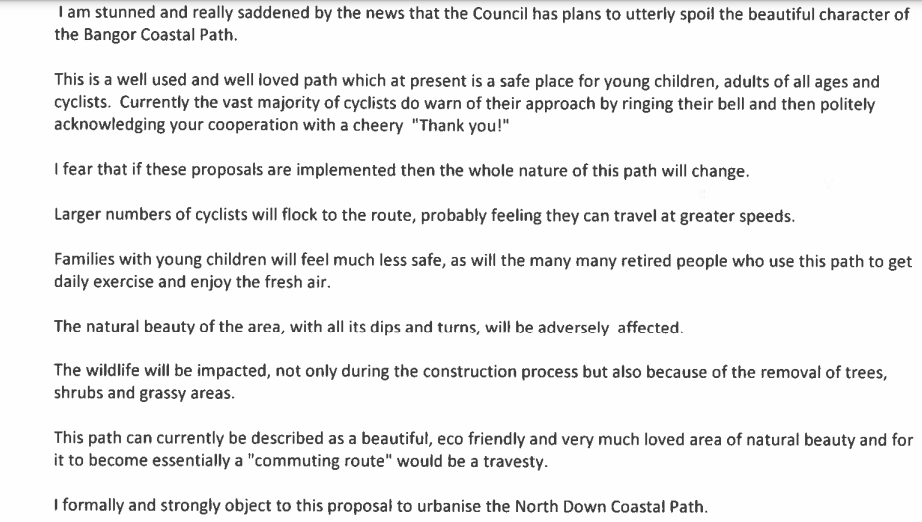Campaign History
Background: On 18 August 2014, New Bye Laws for Pleasure Grounds, Public Walks and Open Spaces came into effect in North Down. These bye-laws prohibit cycling unless any part of a pleasure ground has a right of way for cycles or there is a designated route for cycling. In December 2014, Council agreed that the coastal path should become a ‘cycle way’ and shortly thereafter, the change in the bye law essentially ensured cycling was permitted on the path. However, little publicity was attached to this at the time, and no guidance on usage was offered.
In 2019 a planning application was submitted to build a Greenway between Donaghadee and Kinnegar, near Holywood. Initially, the public were largely unaware of the details of the proposal, but some individuals scrutinised the plans and publicised these. The subsequent group became known as ‘For Another Path’ as the main aim was to try to encourage officials to see that the coastline was never going to be a panacea for the disparate needs of cyclists, for a plethora of reasons. The solution seemed to be to find another route for the Greenway inland, most likely by finding solutions within the roads where appropriate land could not be found.
Petition
Our group was one of two groups who started a petition in opposition to the plans. The petition was quickly shared among many members of the public who signed and left comments giving their views on the application.

The petition secured 4284 signatures, and what was even more powerful was that signees were clearly local people who had a strong opinion and who added hundreds of comments, which helped our campaign group to identify the huge variety of reasons why people objected so much.
Leaflet Drop

We are extremely appreciative that so many people were willing to give up their time to drop leaflets through doors to raise awareness of the reality with the proposed works. For our group it was a learning curve, and one which increasingly revealed that most people did not ‘support’ the proposed works – but instead had no idea of the realities and the impact this would have on the shared natural area that so many people value. The leaflets led interested parties to read more about the proposed plans to ascertain their level of support or objection. An increasing number of people engaged with the process, enabling more questions to be raised by different members of the public and the process of enquiry revealing answers to concerns, interests and also some misconceptions connected with the scheme.
Liaising with councillors, council officers and other bodies
The group has had many meetings and chats with individual councillors, walks with several members of different parties and negotiated with council and other bodies towards achieving an outcome that might be a win/win for all. Over the course of approximately two years, before the application was withdrawn our group worked tirelessly to ensure transparency and engagement. We were instrumental in ensuring that the opinions of so many thousands of path users were heard loud and clear. Towards the 2023 elections it became clear that the North Down Coastal Path was an election issue and that party policy needed to reconsider their stance in the light of strong public opinion.

Social Media
Shortly after the campaign group was formed, we started a Facebook and Twitter account. As the public became more aware of the campaign, the Facebook page became more popular. It provided a useful forum in which to save files and drawings. These had previously only been accessible on the planning portal. It can take a while to learn to navigate the portal, and most people simply wouldn’t have the time to do this – so we tried to put the drawings and the main documents into the files section of the Facebook page, where people could access them to see the facts for themselves. The main thrust of this was to show that we were not trying to persuade people to object to the Greenway, but simply present the facts in a way that they could make a decision for themselves. This enabled people to say which bits they did or didn’t agree with, and why – based only on the facts.
We are very protective of our reputation, as we wish to deal with council and other authorities with complete respect and from a position of mutual understanding. Therefore, we do not give traction to any trolling or abuse on our social media platforms.
Strength of opposition in the community
Using a combination of social media, leafletting and publicising in the local press, we tried to let people know exactly how they could register their objections or support for the Greenway application either by emailing planning or by using the portal.
As a result, a large number of representations were received by Planning (our last count was in the region of 700) with approximately 78% of those representations being letters of opposition.

It is tempting sometimes to rely only on statistics in these situations, but reading those letters enabled us to get a real feel for how people felt about the application. Including why many people were invested in the creation of a Greenway. It enabled a qualitative aspect to our campaign, and we also started to publish the content of some of these letters on social media (without the names) to show exactly what this path means to people. The letters included some several pages long, from people with expertise in various areas such as environmental, landscaping, cycling, leisure and walking.
Importantly, these letters may well have been categorised as ‘support’ or ‘objection’ but in truth many, many letters included elements of both – which could and should be used to inform the priorities for future work on and around the coastal path.